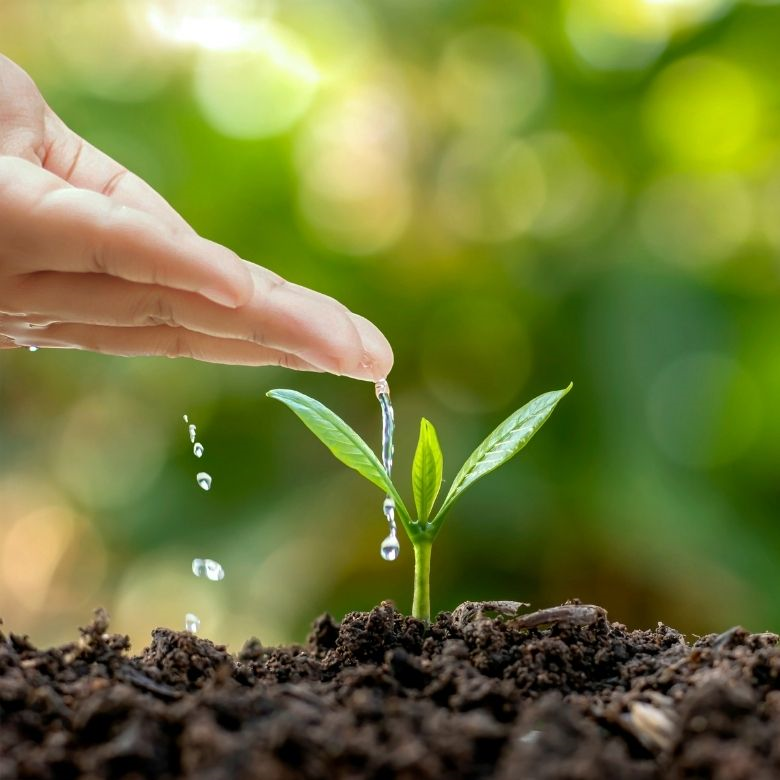There is a belief among flora enthusiasts that more CO2 in the air means better growth and development of plants. Is this a fact or a myth? According to a well-known proverb: “you can have too much of a good thing”.
While it is true that the presence of CO2 in the air is an essential factor for plant life, it is not correct to assume that plants need as much carbon dioxide as possible in order to thrive.

Why do plants need carbon dioxide?
Plant cells, like animal cells, require a certain amount of energy, which they use to transport water and minerals to all their tissues. This energy is also used to synthesise organic compounds that plants need for proper growth and development.
The carrier of this energy is ATP – adenosine triphosphate, a tiny molecule that stores precious energy in its chemical bonds. ATP is produced during photosynthesis, which takes place in the green parts of the plant. Carbon dioxide is vital for this process.
In simple terms, plant cells produce organic compounds from carbon dioxide and water using the energy provided by ATP. As a result, plants release oxygen for humans and animals to breathe.
What is the relationship between plants and CO2?
It turns out that excess carbon dioxide in the living environment of plants can be harmful. How does CO2 affect plants? What quantities are optimal for their growth and development?
It is a fact that plants take in carbon dioxide and give out oxygen. Knowing that CO2 is essential for plants to live, we often go to extremes in assuming that the more we supply it to plants, the more oxygen they will produce.
Unfortunately, excessively high CO2 concentration in some plants causes photosynthesis to slow down and even weakens pest defence mechanisms (e.g. in soya). There is also evidence that historically many plant species over the years have suffered greatly from the sudden increase in carbon dioxide concentration in the air.
It must be noted that plants also need nutrients in order to grow properly. For example, if we neglect other nutrients such as nitrogen, plant growth can be stunted. Moderation is recommended, although in the case of some plants, the ratio between carbon dioxide requirements and other components can vary quite widely.
How to check the concentration of carbon dioxide?
CO2 content is measured in units of ppm (parts per million). The most common concentration in natural conditions is between 300 and 400 ppm. Interestingly, in indoor growing, CO2 levels can be increased by as much as 900 to 1500 ppm. However, caution must be taken not to harm the plants and slow down photosynthesis.

The CO2 concentration is optimal – what else do plants need?
Carbon dioxide is an essential element for the proper development of plants, but overabundance definitely harms them. While ensuring that plants are optimally supplied with CO2, one should not forget about other factors necessary for photosynthesis. Plants that are supplied with a large amount of CO2 also need more water, minerals and light. This is why regular watering, a suitable substrate (soil) and optimal sunlight are so essential.
The demand for CO2
CO2 is one of the most important components that plants need for proper development. We need to remember however, that there are some plants that have a much higher demand for carbon dioxide than others. These include, in particular, succulents and aquarium plants. This is mainly due to the conditions these plants need for proper development. Succulents store water in their leaves or bulbs, so they do not require intensive and frequent watering. The water reserves mean that the carbon dioxide requirement of these plants will be considerably higher than that of the classical fern or peace lily.
In contrast, aquarium plants mostly grow in sand, not in soil. Accordingly, they obtain less nutrients from the substrate than plants that need fertile soil to grow properly. These plants need carbon dioxide in order to thrive – it promotes their growth and supports the photosynthesis process.
Without CO2 there would be no plants
There are numerous theories regarding the actual CO2 requirement of plants. In most cases, carbon dioxide is necessary for plants to develop properly. Some plant species need more, others less. The fact is, that regardless of the species, carbon dioxide is one of the most crucial components that plants need to live. However, it is important to balance the CO2 demand and the supply of other, equally important nutrients. This will provide the plants with the best conditions for growth and development.
